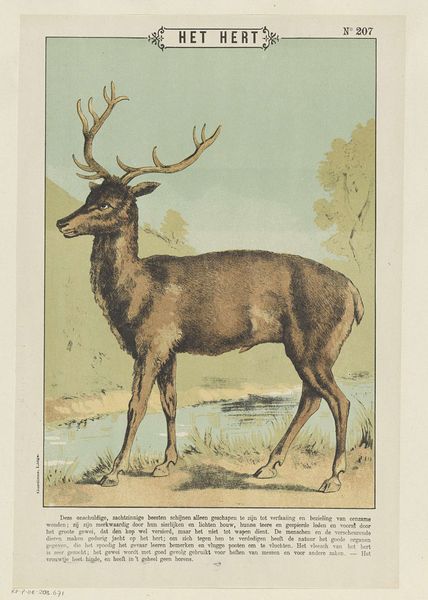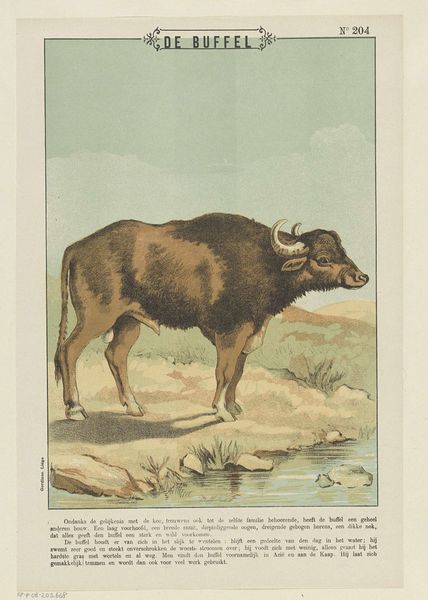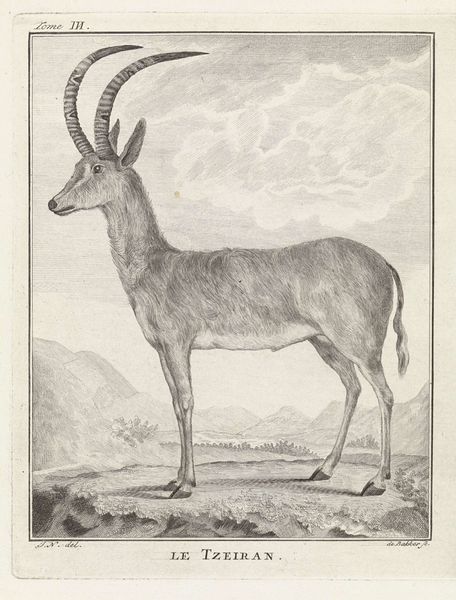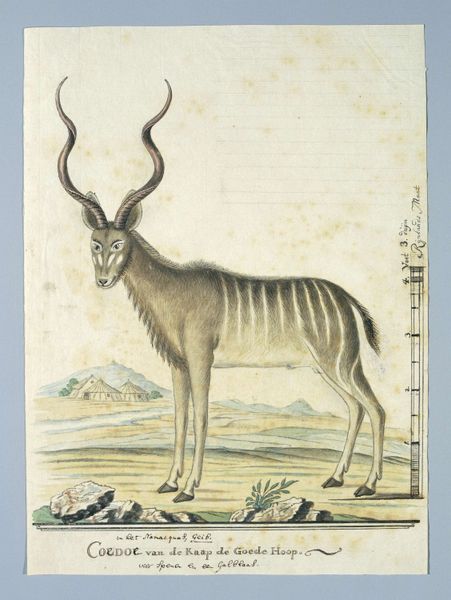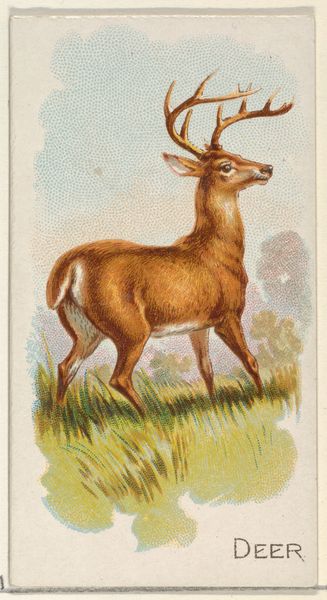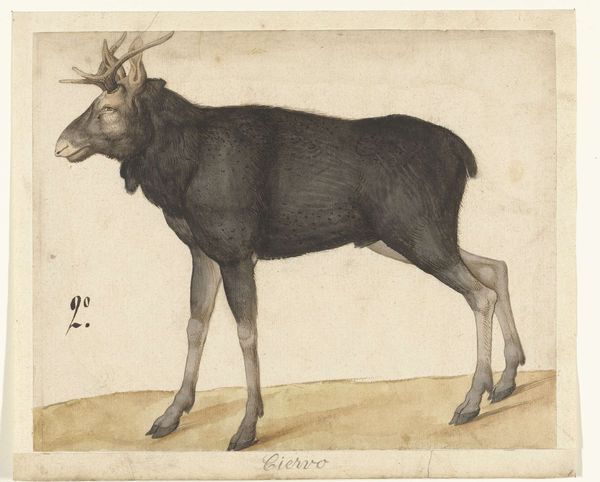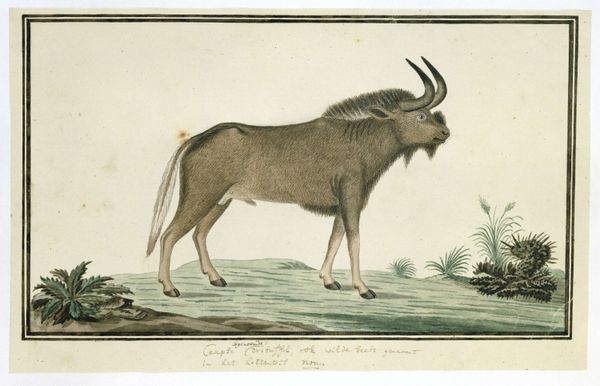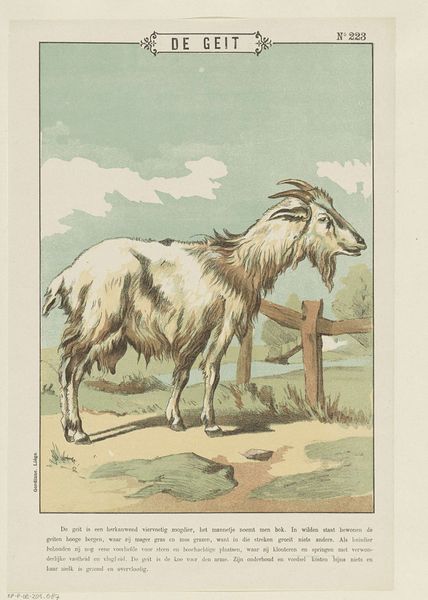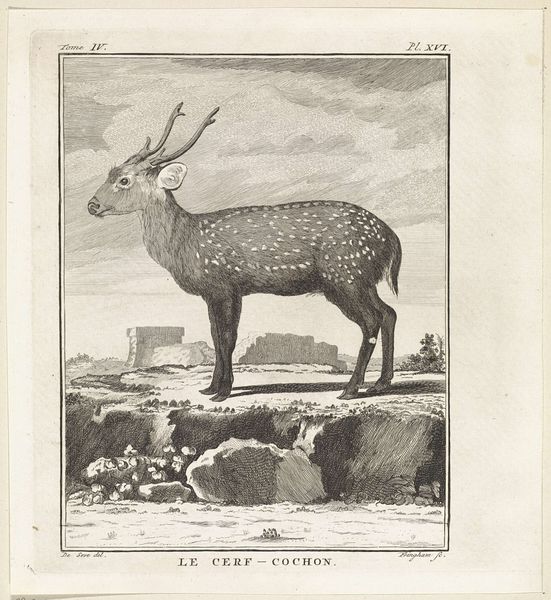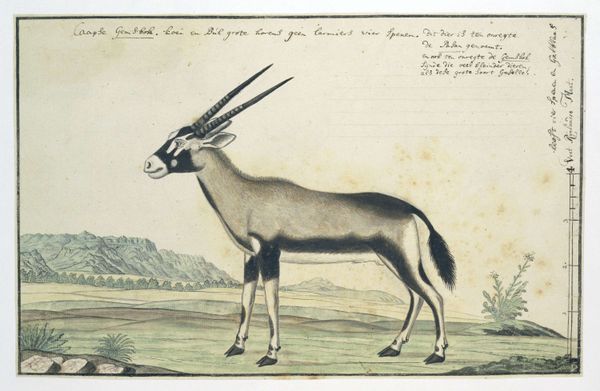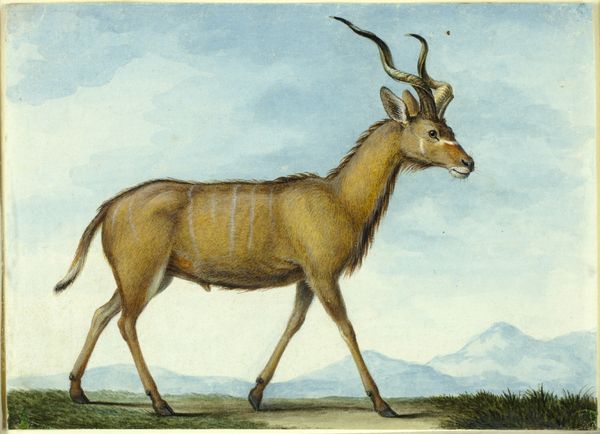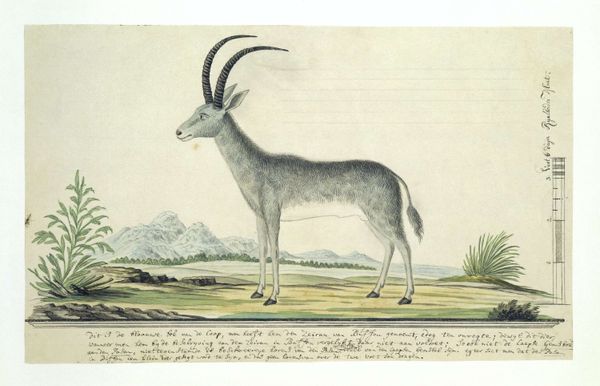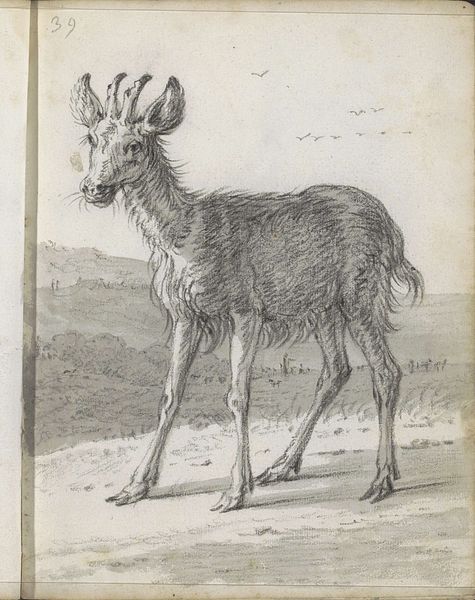
#
narrative-art
#
animal
# print
Dimensions: height 399 mm, width 269 mm
Copyright: Rijks Museum: Open Domain
This print of an antelope was made by Gordinne, using a lithographic process. Lithography is a printmaking technique that relies on the simple principle that oil and water don't mix. The image was likely drawn onto a flat stone or metal plate with a greasy crayon, then treated with chemicals so that ink would adhere only to the drawn areas. The print you see here would have been made by repeatedly pressing paper against the inked surface. Notice the slight blurring of the image and the flatness of color, which are characteristic of lithographic prints. The widespread adoption of lithography in the 19th century made mass production of images like this possible. Prints like these made knowledge about the natural world available to a wider audience, reflecting both an increased public interest in science and the growth of industrial capitalism. Next time you look at a print, consider the process by which it was made, and how that process has imbued the artwork with cultural significance, blurring the boundaries between art, craft, and industry.
Comments
No comments
Be the first to comment and join the conversation on the ultimate creative platform.
